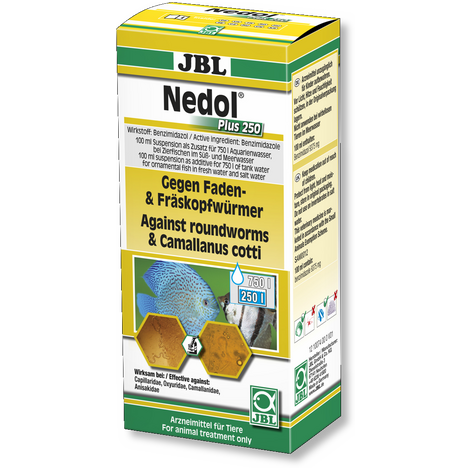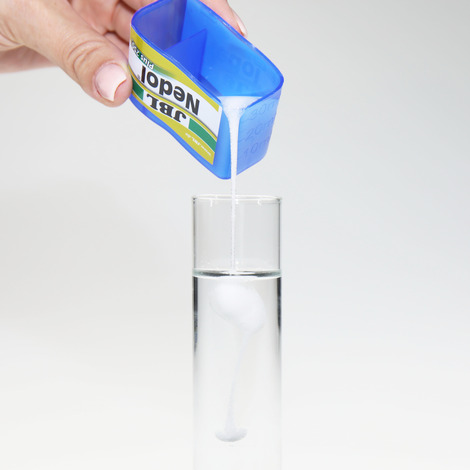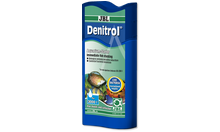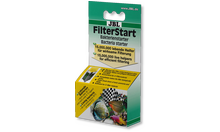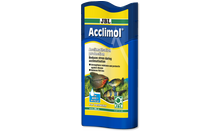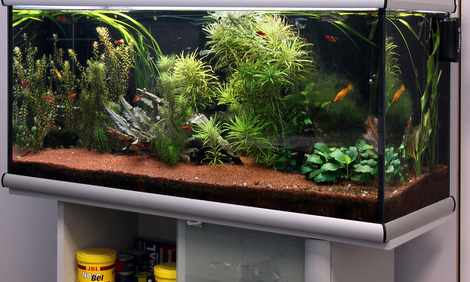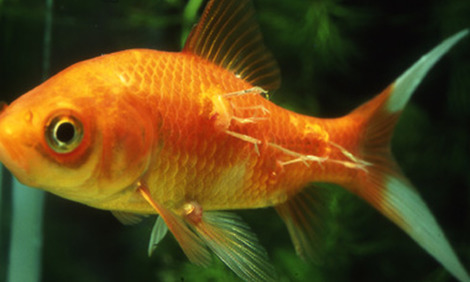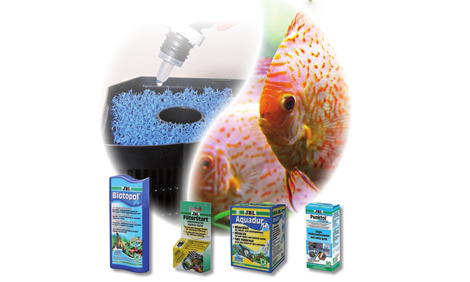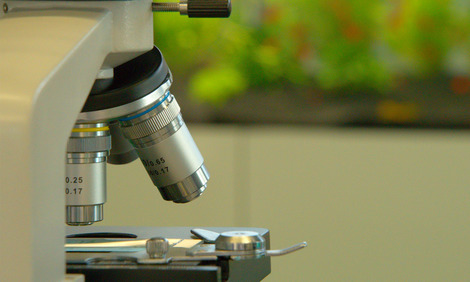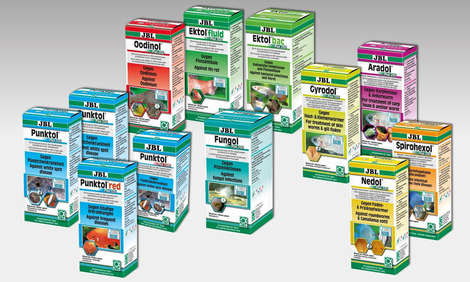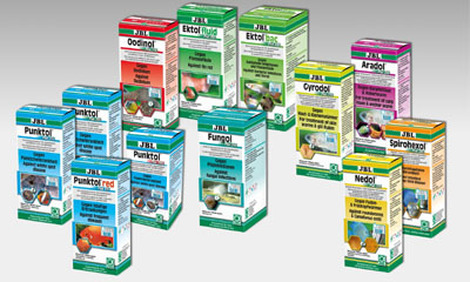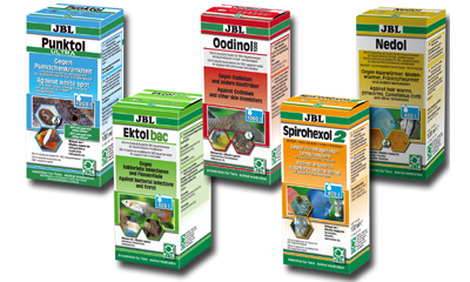About 90 % of all fish diseases can be put down to a weakening of the fish’s immune system. This means the application of remedies can fight the pathogen but doesn’t generally eliminate the cause. It is therefore very important to determine the cause.
As soon as the first signs of disease become noticeable IMMEDIATE action is required. In most cases people wait too long.
Nematodes, capillaridae, roundworms:
Among the over 10,000 known species of the roundworms (nematodes) the screw worm (camallanus cotti) and the hair worm (capillaridae) are considered two of the most damaging in the aquatic field.
The following general symptoms may indicate one of the aforementioned worm infections: Infected fish become emaciated despite good feeding. The fish occasionally excrete white, slimy faeces, because the parasites damage the intestinal wall, which is then excreted along with the faeces. Please note: Slimy, white faeces can also indicate an improper diet or infection with flagellates. Therefore, this symptom is only a sign of infection with roundworms (nematodes) if it occurs in combination with another of the symptoms mentioned. Schooling fish lose weight and stay outside the school. Individual fish lie on the bottom and make rotating movements.
A camallanus cotti infection is relatively easy to recognise: The rear end of the red coloured female intermittently hangs out of the anus of the infected fish in order to deposit larvae. With the exception of camallanus cotti, only a microscopic examination can provide a safe diagnosis.
Products & Shop
JBL Nedol Plus 250
Remedy against roundworms and Camallanus
- For the treatment of hair worms, pinworms, Camallanus worms and other nematodes
- Infected fish become emaciated despite good feeding. The fish occasionally excrete white faeces, because of a damaged intestinal wall, which is then excreted along with it.
- Camallanus worms are often easy to recognize with the naked eye, because they hang out of the fish’s anus at times
- JBL Online Hospital: gives you access to identify fish diseases
- Contents: 1 packet Nedol Plus 250, 100 ml. Suitable for aquariums with max. 750 l. For repeated use for max. 250 l. Use: 10 ml/75 l aquarium water. Length of treatment depends on the type of worm. Can take up to 20 days
You may also be interested in
JBL Nedol Plus 250 100 ml
Properties
| Animal species: | Arowana, Axolotl, Barbels, Bettas, Bichirs/reedfish, Blowfish, Catfish, Cichlids (South America), Crayfish, Danions, Discus, Dwarf shrimps, Flowerhorn, Gobies, Goldfish, Gouramis, Guppy, Juvenile fish, Killifish, Livebearers, Loaches, Panchaxes, Rainbowfish, Spiny eels, Tetra, Veiltails, freshwater butterflyfish |
| Animal size: | For all animal sizes |
| Animal age group: | All aquarium fish |
| Volume habitat: | > 750 L |
| Material: | Benzimidazole, polyethylene glycol, carboxymethyl cellulose sodium salt, purified water |
| Colour: | white |
| Dosage: | 100 ml suspension as a supplement for 750 l aquarium water |
| Transport conditions: | For this type of product we recommend transport and storage at room temperature. |
Electronic label / illuminant
| Mercury: | No |
| Dimmable: | No |
Technical Data
| Height: | 125 mm |
| Length: | 60 mm |
| Width: | 30 mm |
Unless otherwise indicated in the instructions for use, the simultaneous use of two different medications is not possible and we strongly advise against it. Toxic cross reactions and undesirable side effects, such as oxygen deficiency or nitrite, cannot be ruled out. If your fish suffer from a primary infection and further secondary infections, always treat the primary infection or disease with the highest stress factor for the animal. Finish a treatment with the correct dosage in accordance with the instructions and then start the second medication. After the treatment or between two treatments, filter the aquarium water over activated carbon for 24 hours to remove any residual medication. The activated carbon need then to be disposed of properly. Any medical treatment is also a stress factor for your fish, so be careful not to overburden your animals and only treat them after a thorough diagnosis.
The active substance benzimidazole contains a secondary amine function which possibly can react with the indicator reagent of the ammonium test. That’s why in individual cases unreliable measured values can occur. However the active substance doesn’t disturb the nitrification.
No. As a rule, over-the-counter medications for ornamental fish may not be used in fish that are bred for human consumption.
The course of every treatment is unique. Depending on the species (Camallanus or not Camallanus), up to 4 treatments are required, as described in the instructions.
Ideally, there will no longer be any signs on the fish after the first treatment. However, the treatment must be carried out until it is completely finished. That is the only way to fully eliminate the larvae which are hatched from the eggs.
In cases of more severe infestation, the fish may take longer to shake all the parasites off of their bodies.
* Read the package insert for risks and adverse reactions and consult your veterinarian or pharmacist.
The course of every treatment is unique. Depending on the species (Camallanus or not Camallanus), up to 4 treatments are required, as described in the instructions.
Ideally, there will no longer be any signs on the fish after the first treatment. However, the treatment must be carried out until it is completely finished. That is the only way to fully eliminate the larvae which are hatched from the eggs.
In cases of more severe infestation, the fish may take longer to shake all the parasites off of their bodies.
An absence of effect is frequently traced to the circumstance that potential intolerances e.g. in shrimp did not occur.
In the instructions for use, we point out that JBL Nedol should not be used with shrimp: Not to be used in invertebrates (corals, snails, shell fish, shrimp etc.) in fresh water or salt water.” This passage indicates that intolerances may occur. This, though, does not lead to the conclusion that the product was ineffective if shrimp and planarians survived.
As JBL is aware of intolerances in some species, we are unable to recommend use in connection with these groups. It is not always immediately possible to recognise whether a treatment was successful or not. Please follow the instructions for use closely.
* Read the package insert and consult your veterinarian or pharmacist for risks and adverse reactions.
